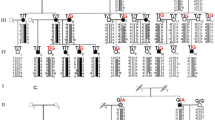Human keratoconus is a common corneal disease with non-inflammatory corneal ectasia, and a subset of this disease is heritable. In an effort to establish animal models for this disease, we discovered Japanese keratoconus (JKC) mice among Mishima molosinus (MSM) mice, an inbred strain of Japanese wild mice (Mus musculus molossinus). Typical phenotypic corneas of JKC mice are, like human keratoconus, conical in shape, although the corneas were often associated with a red punctum at the tip. In contrast to human keratoconus, histological examination revealed the inflammatory changes such as infiltration of capillaries and hematocytes in JKC mouse corneas. Although JKC mouse corneal change is probably secondary to keratitis and is a mouse-specific keratopathy, its pathogenesis may be relevant to that of human keratoconus. Linkage analysis mapped the responsible gene at the markers D13Mit21, D13Mit252, D13Mit279, and D13Mit39, which are located between 21.9 and 34.0 cm of the mouse Chr 13. Candidate genes in this region include genes for cathepsins, interleukin, and chemotaxin. Further study of JKC mice may shed light on pathogenesis of human keratoconus.
Similar content being viewed by others
Explore related subjects
Discover the latest articles and news from researchers in related subjects, suggested using machine learning.Author information
Authors and Affiliations
Rights and permissions
About this article
Cite this article
Tachibana, M., Okamoto, M., Sakamoto, M. et al. Hereditary keratoconus-like keratopathy in Japanese wild mice mapped to mouse Chromosome 13 . Mamm Genome 13, 692–695 (2002). https://doi.org/10.1007/s00335-002-3031-4
Received:
Accepted:
Issue Date:
DOI: https://doi.org/10.1007/s00335-002-3031-4




